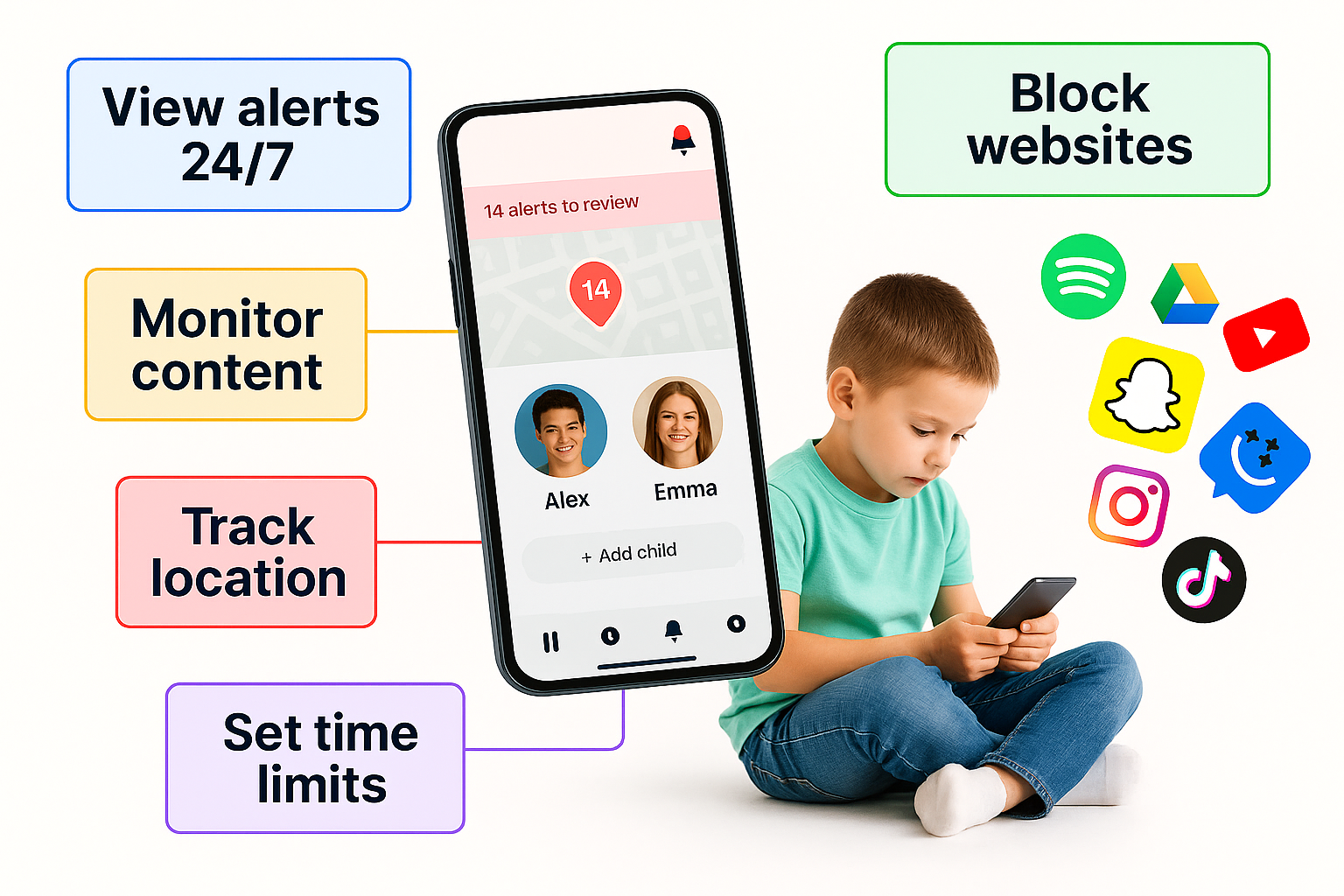When the Phone Became Everything: How One Family Rediscovered Real Life Beyond the Screen
A New Device, A New Era
When we handed our tween her first smartphone, we thought it would simplify things. She’d stay in touch on her walk home. We’d check she was safe. She’d download an app for school. It felt practical. Modern. Connected.
But that first week brought an unexpected change. The phone stayed in hand more hours than we anticipated. Our child’s attention shifted. Conversations faded. The living room quiet grew awkward. The device we chose to bring us closer began to pull her away.
The Silent Drift
Dinner table: used to be buzzing. Now her eyes flickered between food and screen. A parent question would get a quick “mhmm” and a glance down.
Bedtime: lights off, phone on. The glow changed the room’s rhythm. Late nights, early alarms, fatigue in the morning.
Weekends: instead of board games or backyard play, the phone went along — on the sofa, in the car, even under the covers.
We worried. We asked. We tried talking. But the more we asked, the more she slipped into a rhythm where the phone was less a tool and more a refuge. And we weren’t invited.
The Trigger
It came out of nowhere. One Saturday she sat in the park, headphones in, phone silent but her eyes fixed on the screen. We called out to her. She looked up, startled, as though she’d forgotten we were there. I felt a pang in my chest — not fear, not anger, but a deep sadness. I realised we had lost more than a few shared moments. We had lost the window into how she was feeling.
Redefining What We Wanted
We sat together—her and us. No blame. No blame‑game. We asked: What do you want your phone to do? Her answer was simple: “Let me talk with friends. Let me check in. But let me still be here.”
That night we made a plan. Not a ban. Not a lecture. A conversation. A reset. We agreed:
- The phone is a connection tool—not a constant companion.
- Downtime begins at 8 pm. No phone after that.
- Weekdays: one hour of free apps, then homework, then family time.
- Weekends: two hours max, plus one tech‑free outing.
- No notifications on the table or in cars.
- A weekly check‑in: “What did you use your phone for? How did you feel afterwards?”
Choosing the Right Device Framework
We didn’t remove the phone. We re‑paced it. We also introduced clearer limits via the parental‑control features.
- We turned off automatic app downloads.
- Set screen‑time schedule so it locked after 9 pm.
- Reviewed which apps she had and asked, “Does this help you? Or distract you?”
- Discussions replaced commands: “What about that game keeps you coming back?”
- We chose devices and settings that supported our values: connection, communication, creativity—not invisibility, distraction, isolation.
The Parameters That Freed Us
What surprised us most: limits increased freedom.
She started using the phone to message friends for real check‑ins, not just scroll.
She brought the phone to school only for calls when after activity, not to carry everywhere.
She began choosing a reading app instead of video games — because she wanted to.
Dinner resumed as a talking place. Car rides became family podcasts or quiet chats, not screens.
The phone didn’t disappear—but its role became sharper, healthier. And our family world grew wider again.
What This Taught Us
- Devices don’t break connection—unchecked habits do. The problem wasn’t the smartphone. It was how it replaced interaction instead of supporting it.
- Involve the child in the rules. When she helped draft our tech terms, she owned them. Resistance dropped. Respect grew.
- Routine matters more than restriction. The regular check‑in ritual became as important as the technical safeguards.
- Balance doesn’t mean equal hours. It means intention. Some days phone time was less. Some days more. But the pattern felt healthy.
- Presence is a parent’s best tech tool. When we modelled phone‑down time, the phone stopped being the default for her, too.
Practical Benchmarks You Can Use
- Set a “first‑device” rule: your child shows responsible behavior for a month before unlimited access.
- Create zones: dinner table, car, bedroom—phone stays outside.
- Create times: phone off at 8 pm, or after homework; weekend extensions have to be negotiated.
- Run weekly tech check‑ins: ask what worked, what didn’t, how they felt.
- Use parental‑control modestly: not to spy—but to support conversation.
- Be mindful of your screen habits. The phone you put away sets the tone for the phone they’ll use.
The Unexpected Benefit
Within three months we saw changes beyond screen time.
She started asking for more walks. She picked up old hobbies. She invited friends over instead of FaceTiming from a corner. We found each other again—not just in the same house, but in the same rhythm.
If you’re reading this and feeling uneasy about the tech in your home—you’re not alone. The device is not the enemy. The drift is the enemy.
Change doesn’t mean revolt. Change means conversation. Change means choosing tools that support your family’s values—not competing with them.
Start the conversation, set the rhythm, pick a device that fits your child’s world and your family world. The phone can be a bridge, not a boundary.
And one day, if you look up from dinner and your child looks at you, not the screen—you’ll remember why you chose this in the first place.

